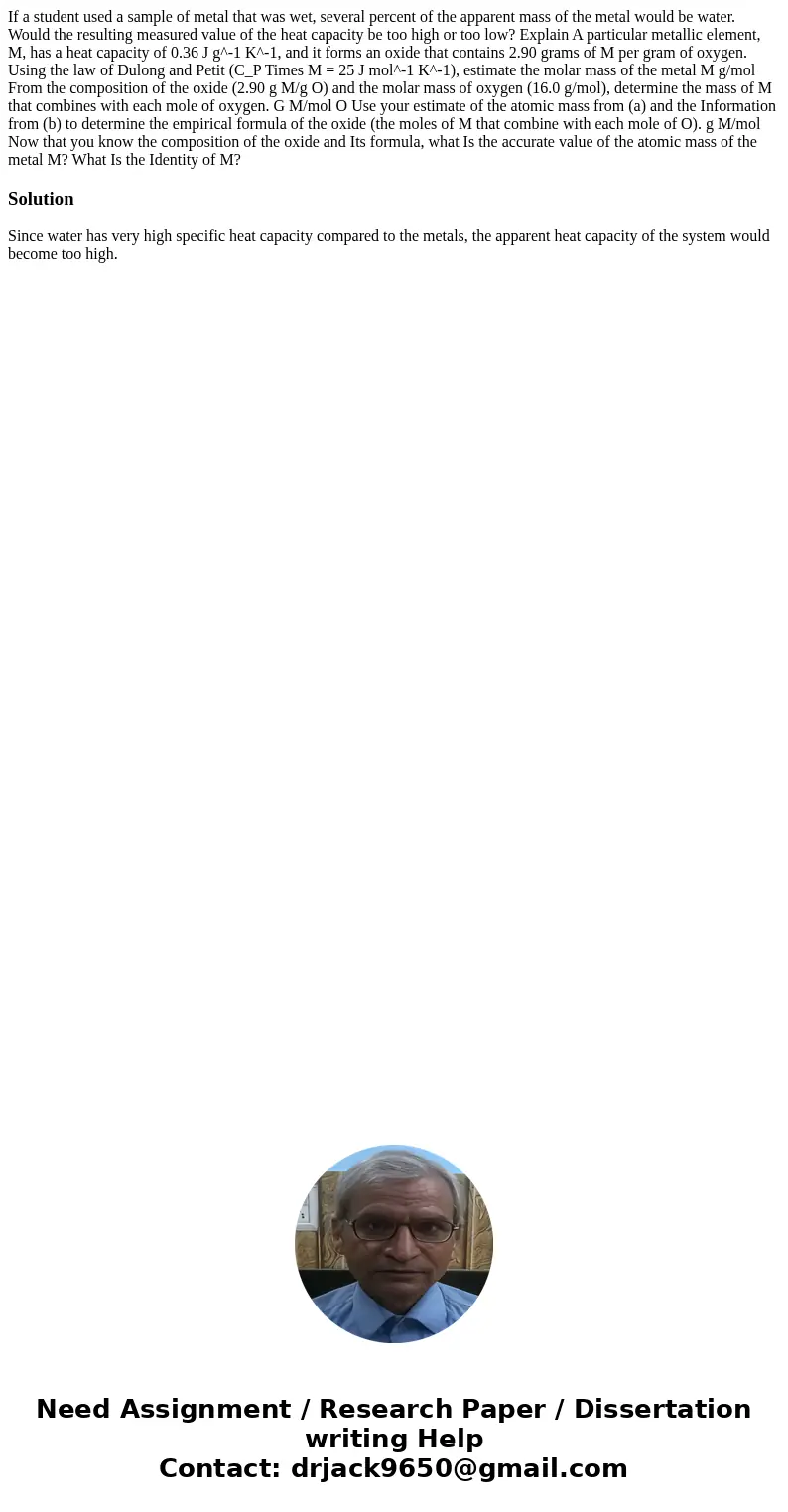If a student used a sample of metal that was wet several per
If a student used a sample of metal that was wet, several percent of the apparent mass of the metal would be water. Would the resulting measured value of the heat capacity be too high or too low? Explain A particular metallic element, M, has a heat capacity of 0.36 J g^-1 K^-1, and it forms an oxide that contains 2.90 grams of M per gram of oxygen. Using the law of Dulong and Petit (C_P Times M = 25 J mol^-1 K^-1), estimate the molar mass of the metal M g/mol From the composition of the oxide (2.90 g M/g O) and the molar mass of oxygen (16.0 g/mol), determine the mass of M that combines with each mole of oxygen. G M/mol O Use your estimate of the atomic mass from (a) and the Information from (b) to determine the empirical formula of the oxide (the moles of M that combine with each mole of O). g M/mol Now that you know the composition of the oxide and Its formula, what Is the accurate value of the atomic mass of the metal M? What Is the Identity of M?
Solution
Since water has very high specific heat capacity compared to the metals, the apparent heat capacity of the system would become too high.

 Homework Sourse
Homework Sourse